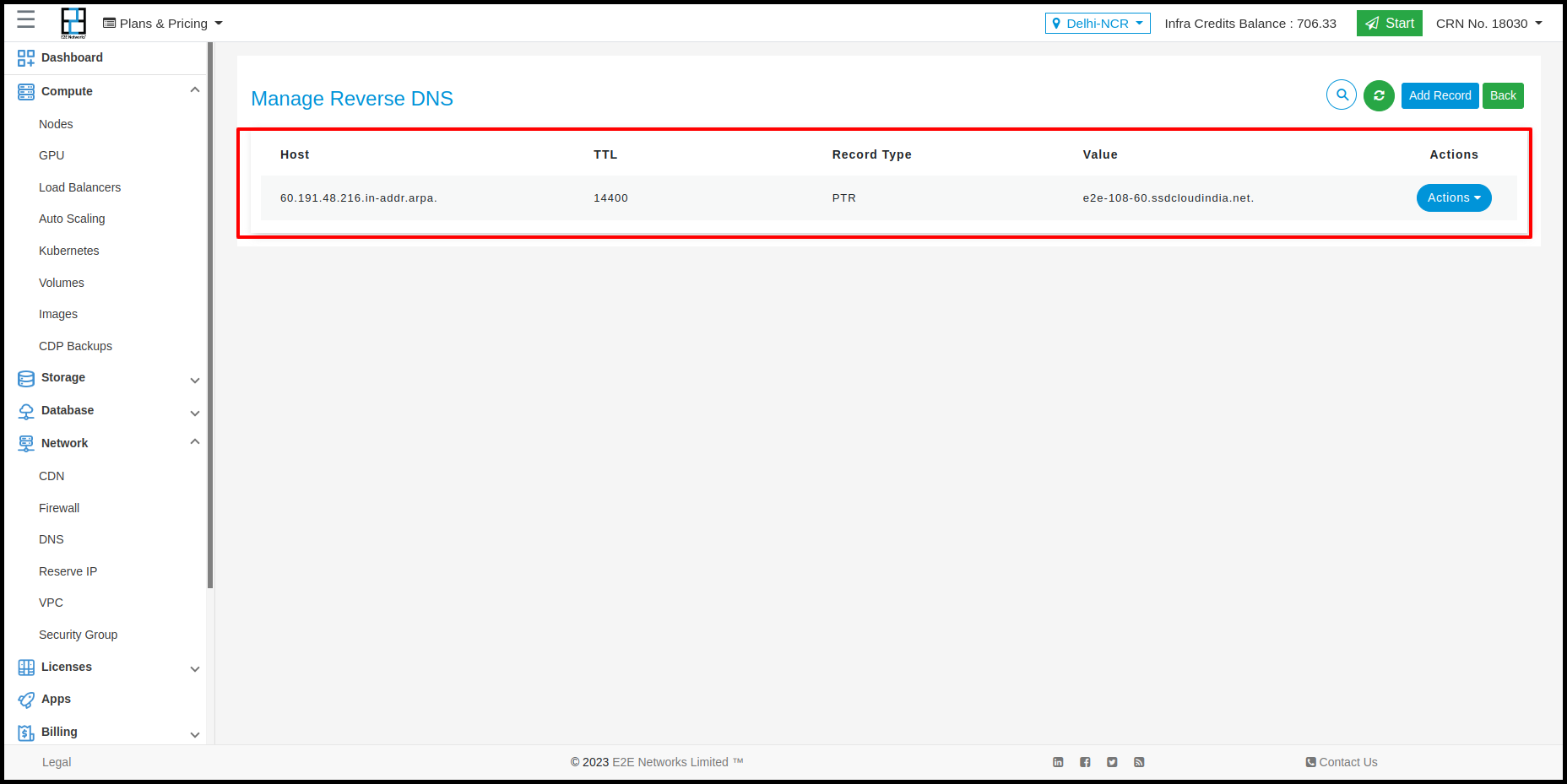DNS
Introduction
DNS (Domain Name System) is a very significant part of the internet. DNS basically associates a Domain Name with an IP address. For example, if you have purchased a domain name, say www.abcdef.com, this domain name requires an IP address to be processed on the Internet because everyone access information online through domain names. Web browsers interact through Internet Protocol (IP) addresses. DNS translates domain names to IP addresses so browsers can load Internet resources. This way DNS servers eliminate the need for humans to memorize IP addresses
DNS must be configured with perfect precision and any inaccuracy in setting up the DNS record may lead to the inefficient performance of your website. The following are the pre-requisites required to configure DNS record on your MyAccount,
A Domain Name
An IP address
Setup DNS Records
Follow the steps mentioned to configure your DNS records via the E2E Networks DNS server database.
Login to MyAccount portal using your credentials set up at the time of creating and activating the E2E Networks My Account.
On the left side of the MyAccount dashboard, click on the DNS sub-menu available under the Services section.

You will be routed to the Manage DNS page. Now, you have to click on the ‘Add Domain’ button to create a DNS record.
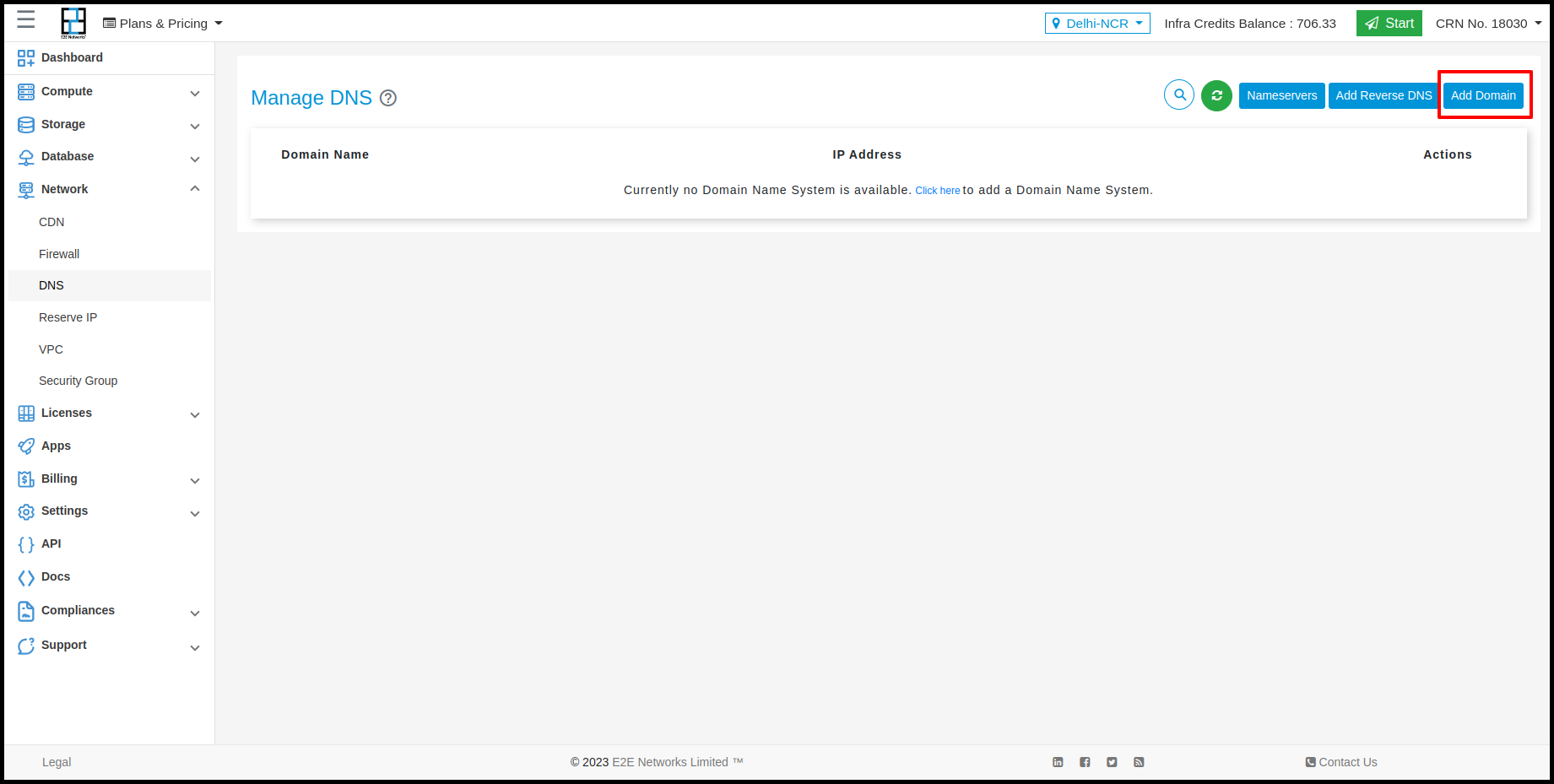
Enter the Domain Details
Every domain requires an SOA record (Start Of Authority Records) configuration at its point of transition, from where the domain is commissioned from its parent domain. For instance, abcdef.com is a domain name and if you want to point this domain to e2e networks DNS servers, then the SOA records for the name abcdef.com must be configured at our DNS portal. Fill in the parameters required as follows:
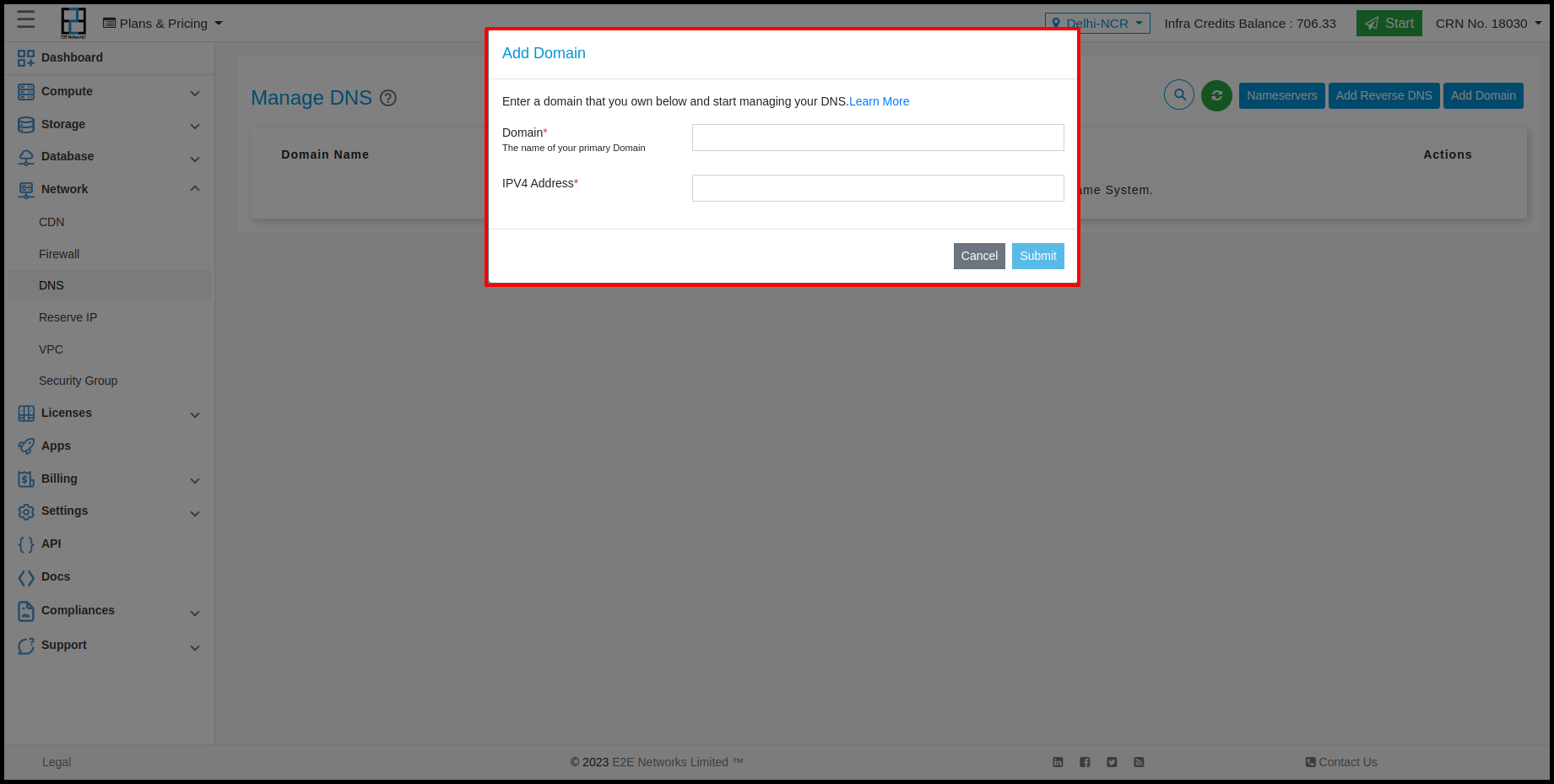
Domain Name: Enter the exact domain name that you own or have bought.
IPv4 Address (External IP): Enter the ‘public IP’ address under the IP address section.
Note
The domain name should not have a “www” at the beginning.
After filling all the details successfully, click on the Submit button.
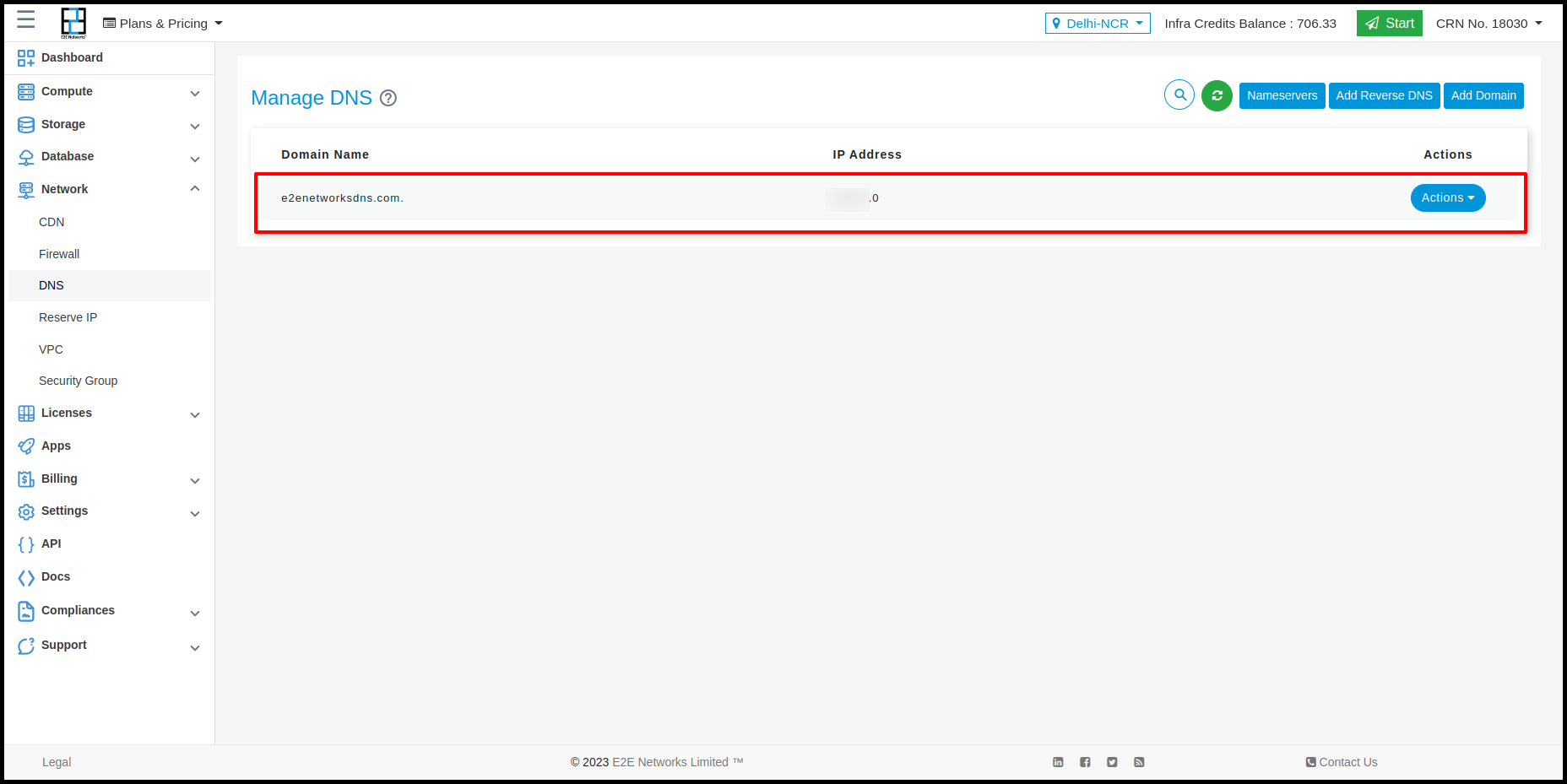
Change nameservers for my domains
Nameservers are your primary DNS controller, and without the correct nameserver settings, your email and website won’t work correctly. You need to change your nameservers with E2E Networks provided.
Name Server – All the information related to your domain name will be stored and maintained by the Name Server.
Link E2E Networks nameserver mentioned below in your domain service provider portal.
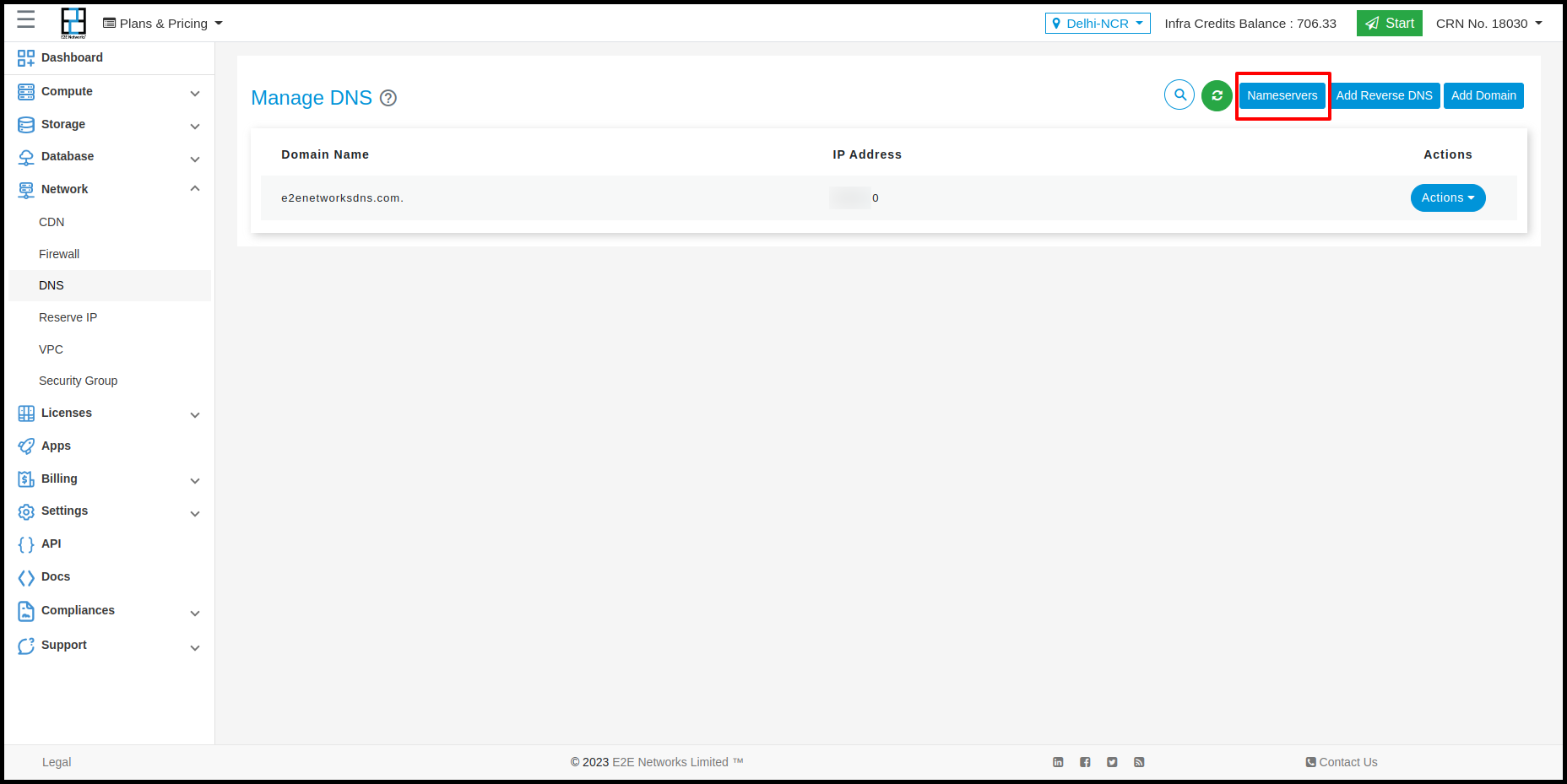
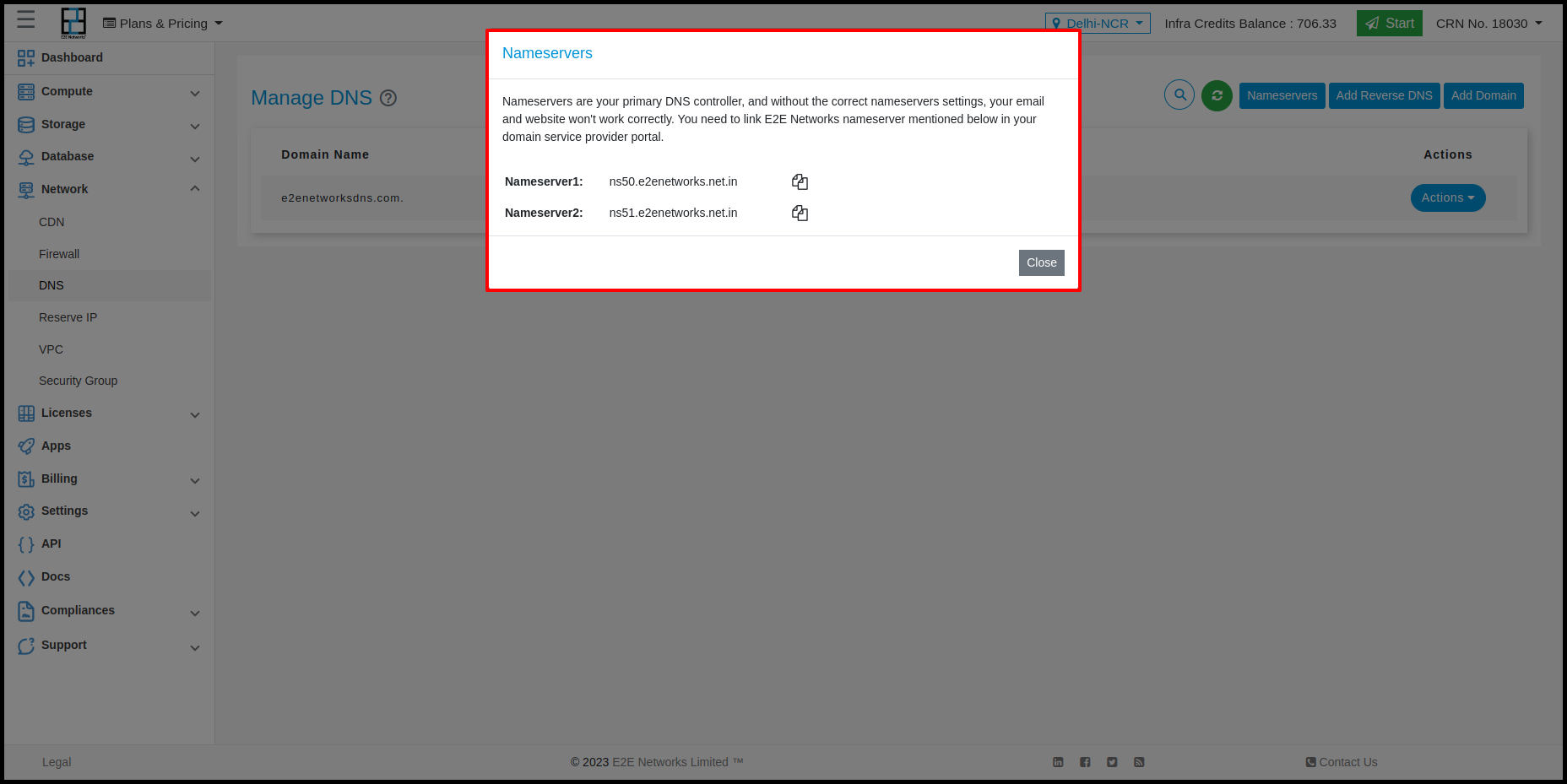
Create your Domain Records
Once you save the SOA records, the domain will be created in the e2e networks DNS database. Configure your DNS records for your domain name by clicking on the ‘Manage’ action next to your Domain name & IP Address.
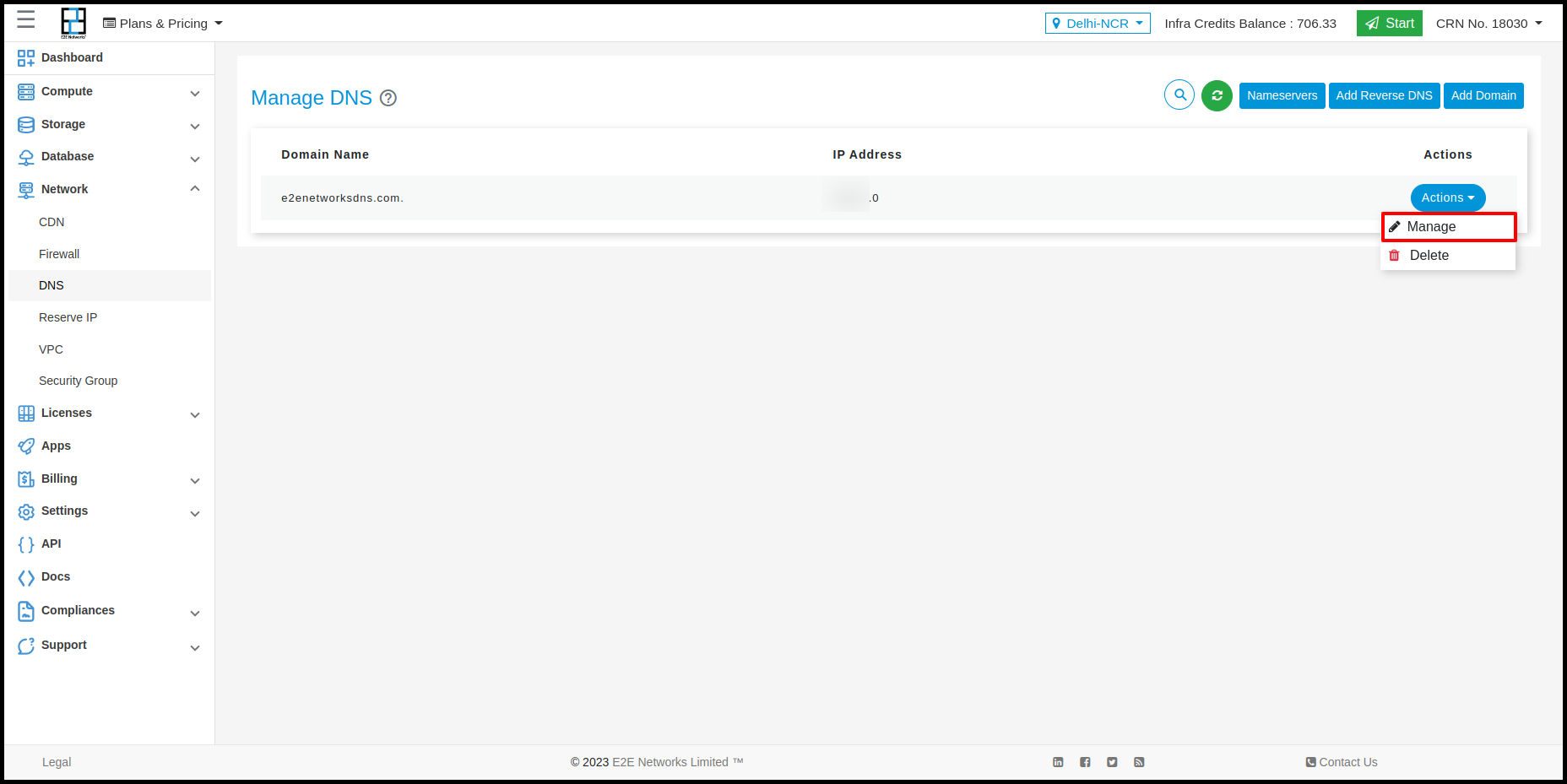
You will be directed to the Edit DNS Record page, where the summary of your Domain Name will be displayed.
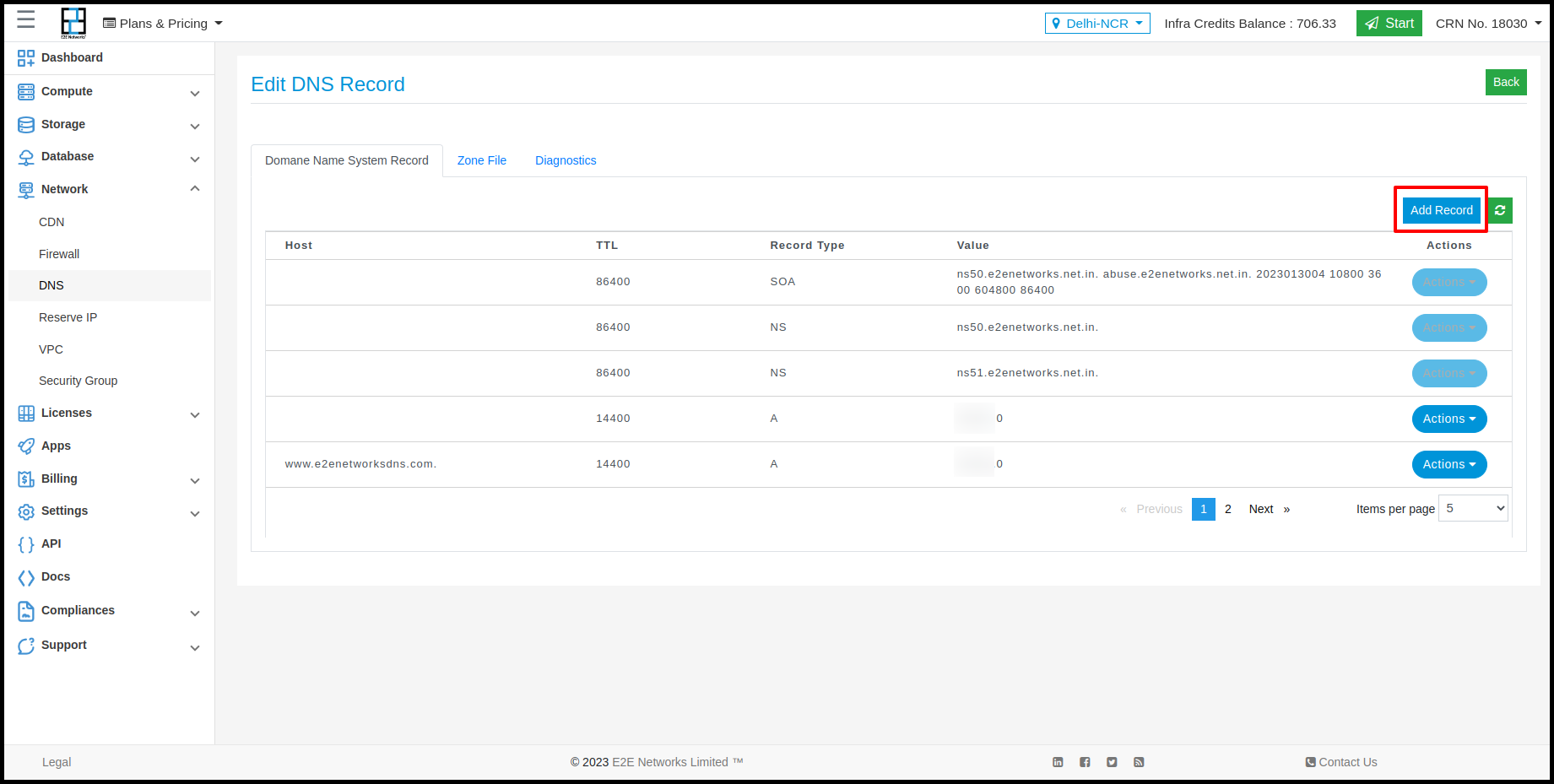
Click on the Add Record button to add various DNS records under zone file.
A Record (IPv4)
Type A record is are necessary to direct a visitor’s browser requests to an origin web server. Multiple A records for the same subdomain can be added with different IP addresses. DNS will alternate requests to the various IP addresses provided. To create a new ‘A-Type Record‘ associated with your DNS record.
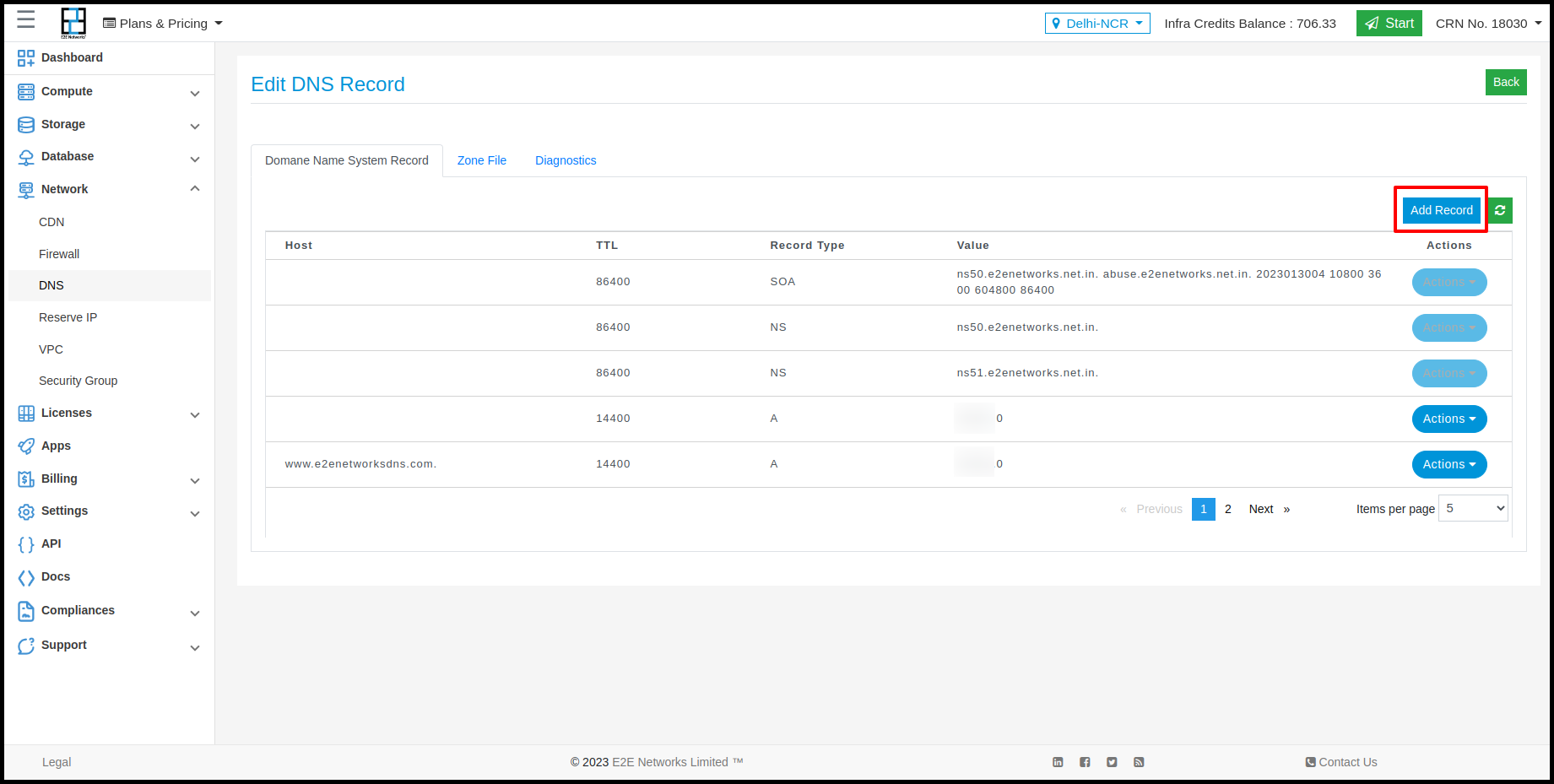
Select A record type from the dropdown list.
Enter Hostname, in the hostname field.
Enter TTL (Seconds), The recommended TTL for A records is 14400 seconds. This means that if an A record gets updated, it takes 240 minutes (14400 seconds) to take effect.
Enter the IP address to which the domain name should resolve.
Click on Submit button.
Notes: • A generic hostname field ending with “.”(dot) such as (abcdefff.com.) is considered as Fully Qualified Domain Name • Hostname field with blank or ”@” symbol is considered as a base domain abcdef.com. • Hostname field at the end of which a “.”(dot) is not used such as (abcdef.com) will append as (abcdeff.com.abcdeff.com.abcdefff.com)
AAAA Record (IPv6)
AAAA records are used to point a domain name to IPv6 address only. If your domain has an IPv6 address, it will instead use an ‘AAAA’ record for the same subdomain can be added with different IPv6 addresses.
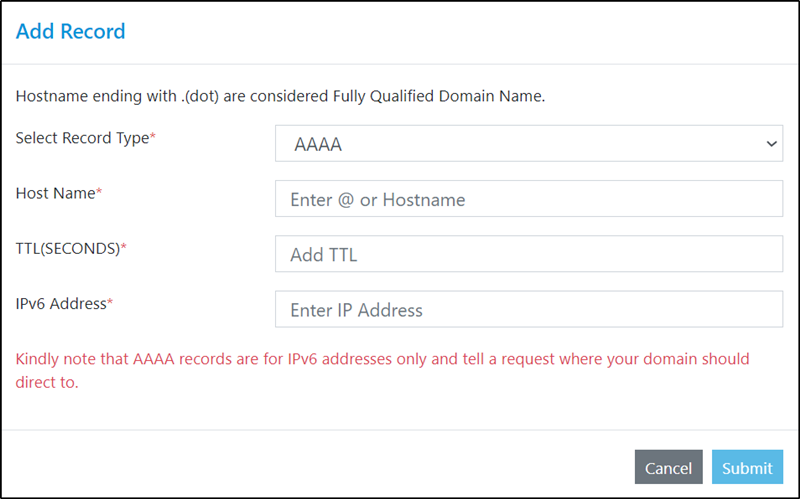
Select AAA record type from the dropdown list. Enter Hostname, in the hostname field. Enter TTL (Seconds), The recommended TTL for AAA records is 14400 seconds. This means that if an A record gets updated, it takes 240 minutes (14400 seconds) to take effect. Enter the IP address to which the domain name should resolve. Click on Submit button.
CNAME Record
The CNAME record is utilized when a domain’s alias name is to be created. CNAME Records are necessary to direct a visitor’s browser requests to an origin web server. Unlike an A record, the CNAME will point to a hostname like www.example.com instead of an IP address. www.example.com would then either have an A record that lists the IP address or use another CNAME record that points to a different hostname. Eventually, a chain of CNAME records must point to a hostname that resolves to an IP address.
For example, an alias name of docs.abcdef.com. can be documents.abcdef.com. using the CNAME record.

Select CNAME record type from the dropdown list.
Enter Hostname, in the hostname field.
Enter TTL (Seconds), The recommended TTL for CNAME records is 32600 seconds. This means that if an A record gets updated, it takes 543 minutes (32600 seconds) to take effect.
Enter the domain in the Point To field.
Click on Submit button.
MX Record
MX record (Mail Exchange Record) is related to the Mail Servers present in your Domain’s server. It’s responsible for the reception of the emails based on their respective mail servers.
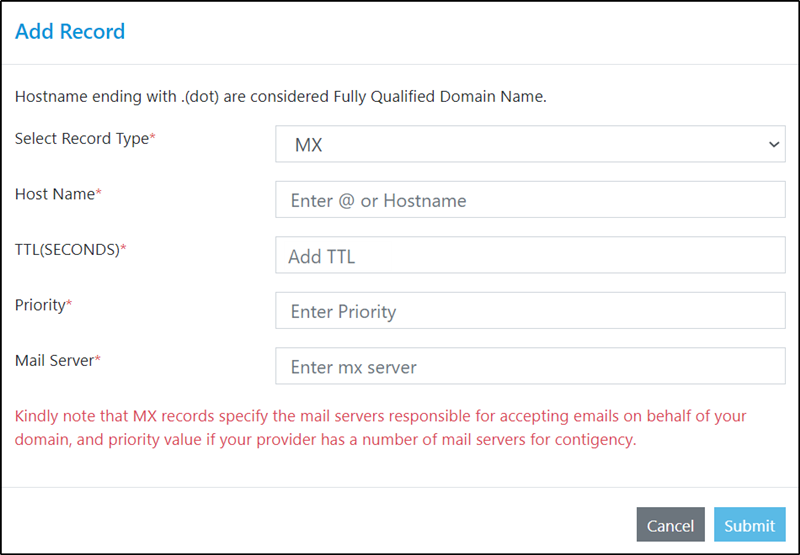
A DNS ‘mail exchange’ (MX) record directs email to a mail server. The MX record indicates how email messages should be routed in accordance with the Simple Mail Transfer Protocol (SMTP, the standard protocol for all email). Like CNAME records, an MX record must always point to another domain.
TXT Record
The TXT Domain Record provides information regarding your server, datacenter or a network in a user-readable format. For instance, you can verify the ownership of a domain using the TXT resource record. You can create SPF, DK, DKIM text records.
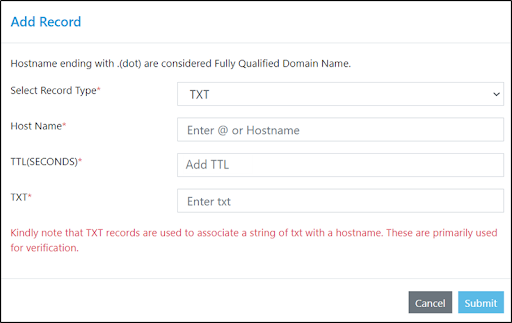
For example, enter v=spf1 mx -all (to make sure that all emails are sent from this server and no other server are authorized)
Select TXT record type from the dropdown list.
Enter your host-name (ex :mail.abcdef.com.)
Enter TTL (Seconds), The recommended TTL for A records is 14400 seconds. This means that if an A record gets updated, it takes 240 minutes (14400 seconds) to take effect.
Enter the rule in the Text area.
Click on Submit button.
SRV Record
SRV records specify the location (hostname and port number) of servers for specific services. You can use service records to direct certain types of traffic to servers.
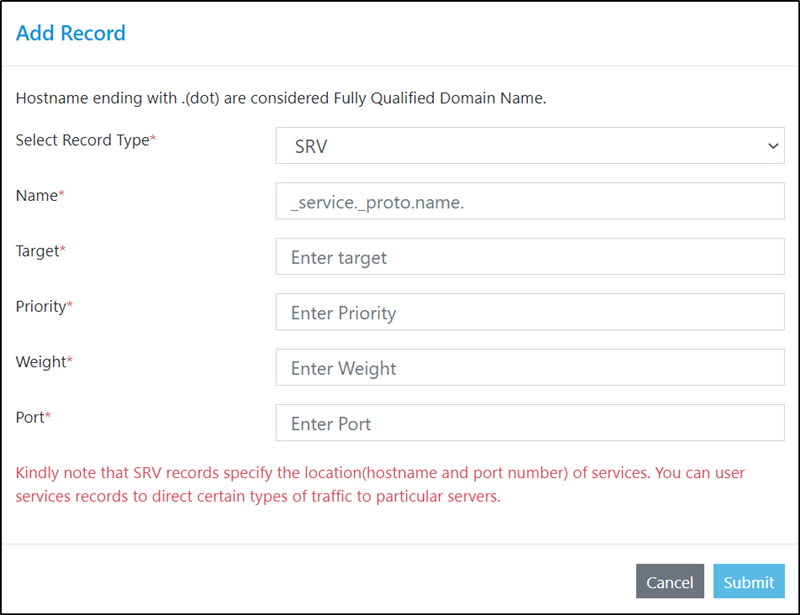
Select SRV record type from the dropdown list. Enter your service name. Enter Target value. Enter the Priority value. Enter the weight value. Enter the port. Click on Submit button.
Final Output
Once you have successfully configured the above-mentioned Record-Types for your domain, you will have a final output summary. You can review and edit all the existing records.
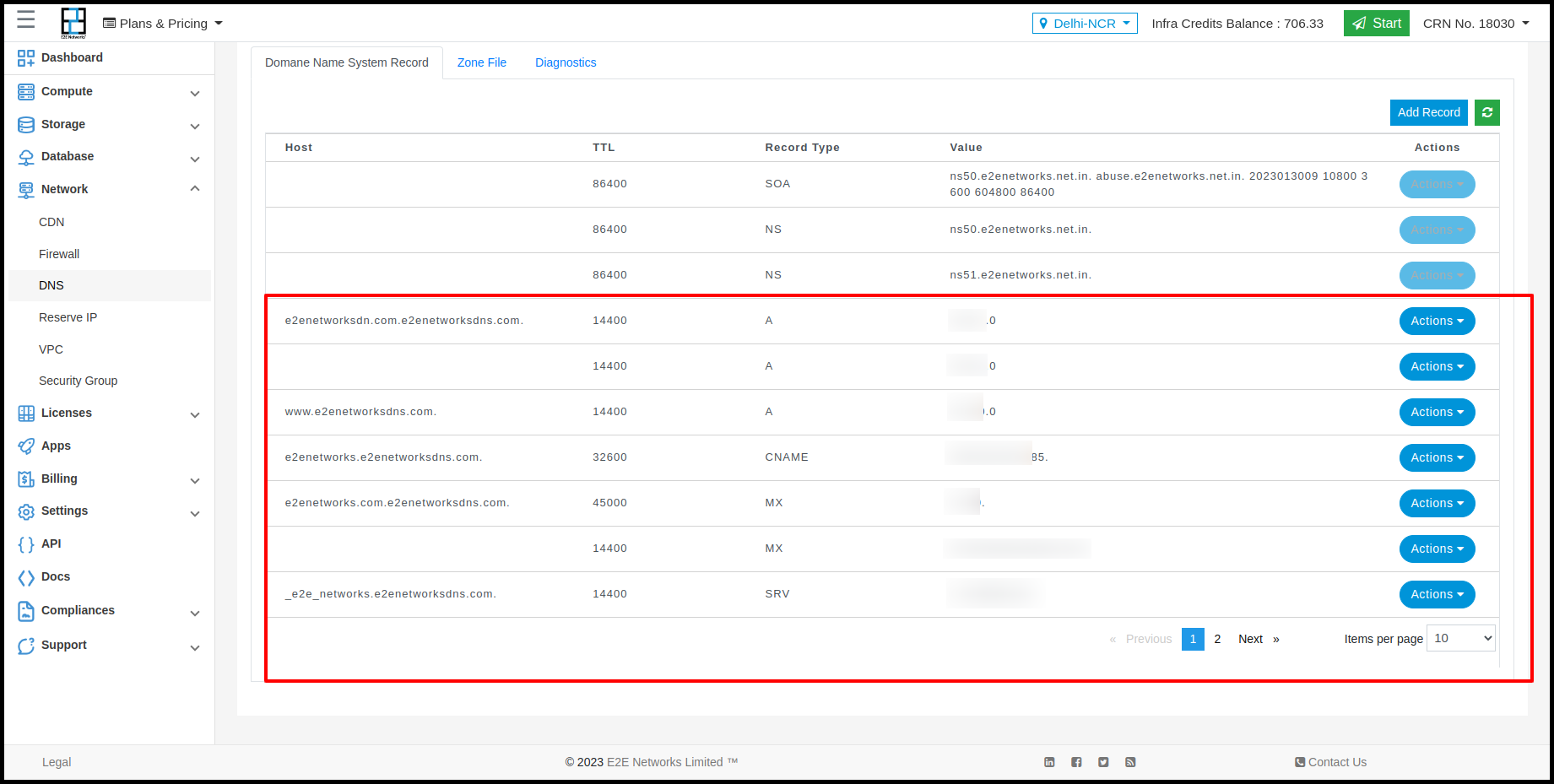
Domain Records are the basic information elements of the domain name system. Each record has a type (name and number), an expiration time (time to live), a class (record type), and type-specific data(value).
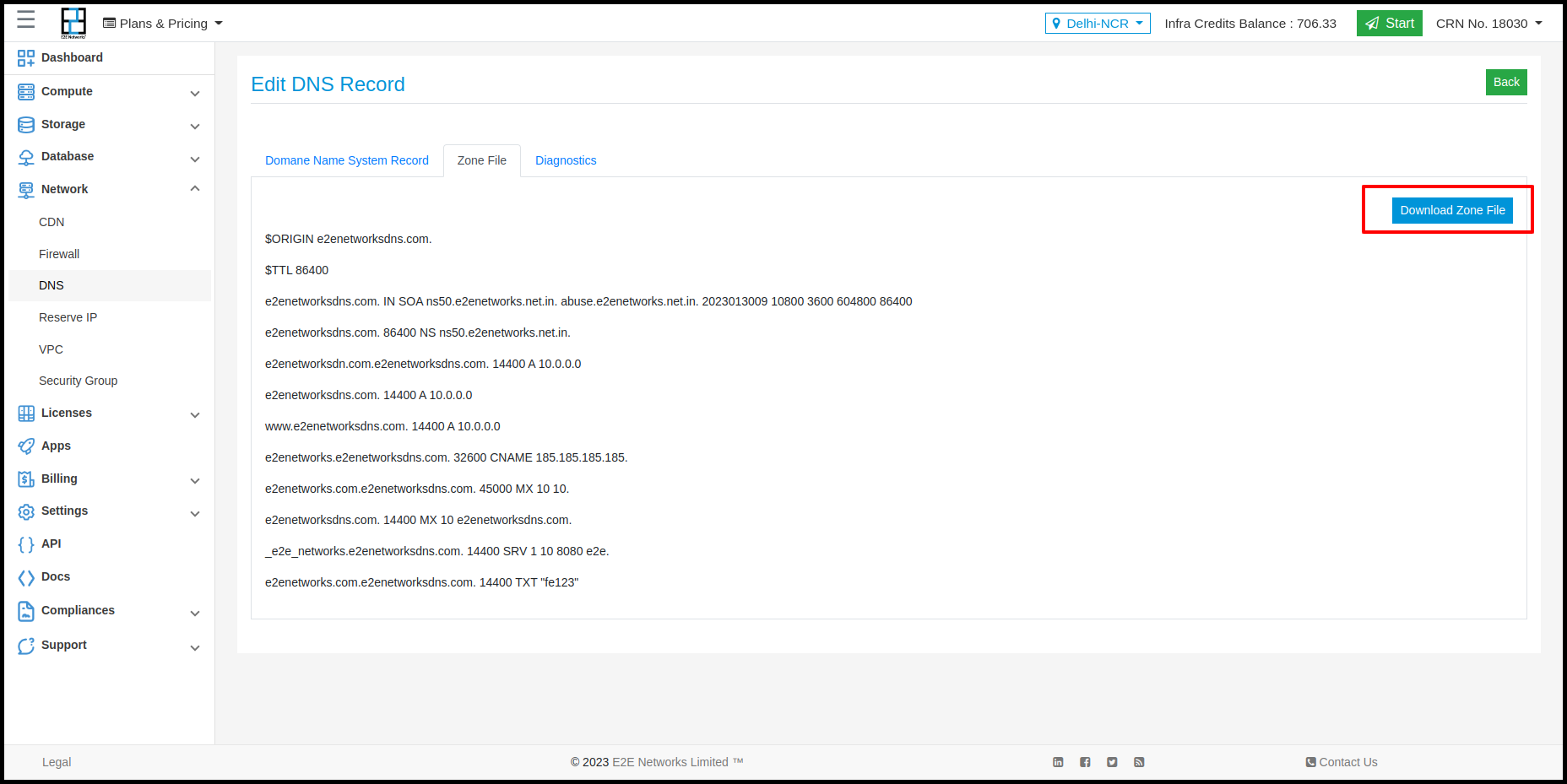
..Note :: Please, refresh the page, in case you fail to see the Domain summary.
Diagnostics
Once you have filled all the required fields and updated the Nameserver information record your domain name should be up and supported in a few hours. Go to the Diagnostics section to get a report of your domain. Click the refresh button in case if the details are not updated.

You can confirm your hostname registration with E2E Networks. Open command prompt/shell and run ‘ping’ command – Check the server IP Address and the response.
ping www.abcdefff.com
64 bytes from 101.53.131.214: icmp_req=1 ttl=60 time=1.05 ms
64 bytes from 101.53.131.214: icmp_req=2 ttl=60 time=0.450 ms
........
Custom Reverse DNS
Reverse DNS lookup is a DNS query for the domain name associated with a given IP address. This accomplishes the opposite of the more commonly used forward DNS lookup, in which the DNS system is queried to return an IP address.
How does reverse DNS work?
Reverse DNS lookups query DNS servers for a PTR (pointer) record; if the server does not have a PTR record, it cannot resolve a reverse lookup. PTR records store IP addresses with their segments reversed, and they append ‘.in-addr.arpa’ to that. For example, if a domain has an IP address of 10.0.0.1, the PTR record will store the domain’s information under 1.0.0.10.in-addr.arpa.
Pre-requisites
A Custom reverse DNS record can only be set for an IP belonging to E2E Networks
Nameserver information record of the domain should point to E2E DNS nameservers.
An A record should exist for the target.
Setup Reserve DNS
Follow the steps mentioned to configure your reverse DNS records via the E2E Networks DNS server database.
Go to the Manage DNS page. You have to click on the ‘Add Reserve DNS’ button to create a reserve DNS record.

You will be redirected to the “Manage Reserve DNS” page. You have to click on the ‘Add Record’ button to create a reserve DNS record.

Enter the following information:
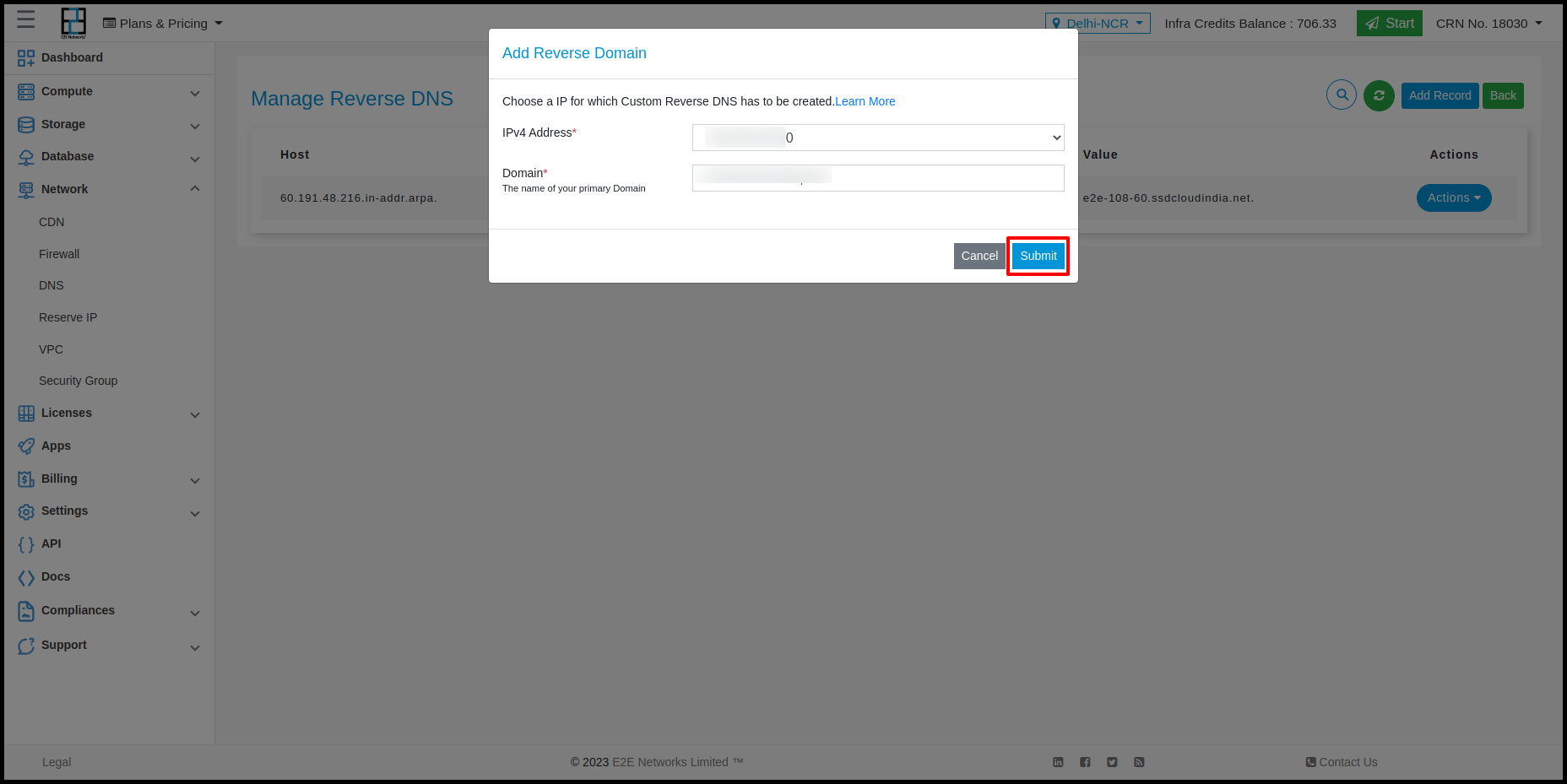
IPv4 Address (E2E Network IP): Select the ‘public IP’ address from the dropdown list under the IP address section. Domain Name: Enter the exact domain name that you own or have bought.
Note
The domain name should not have a “www” at the beginning.
After filling all the details successfully, click on the Submit button.
